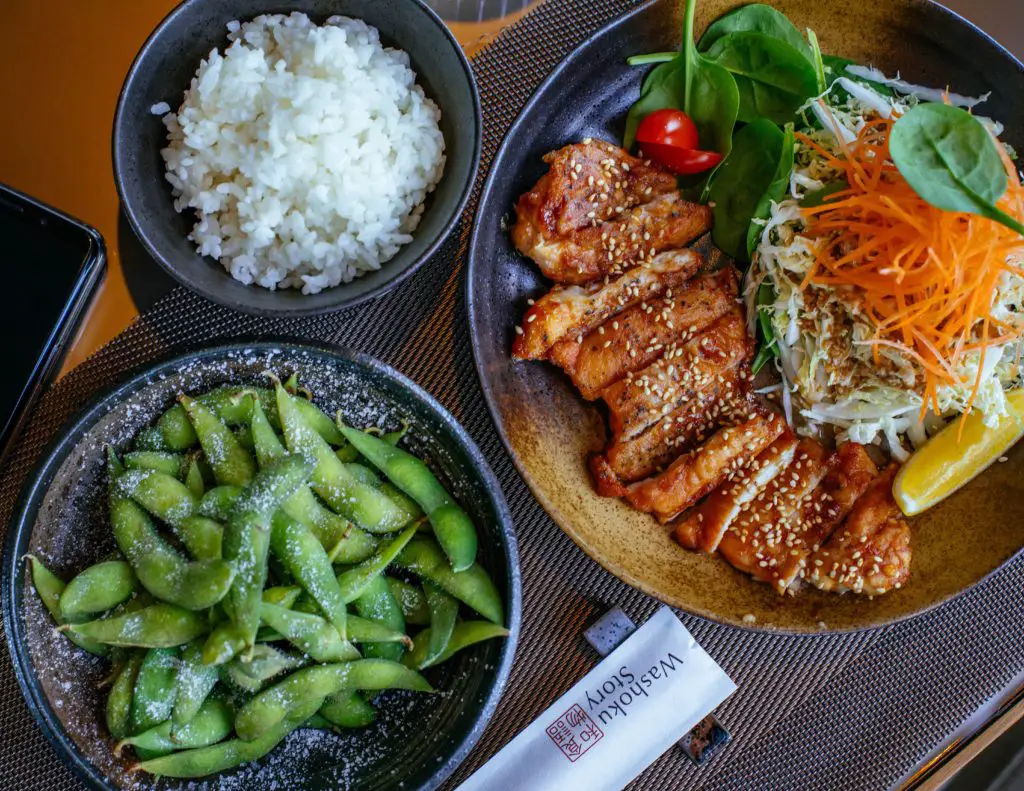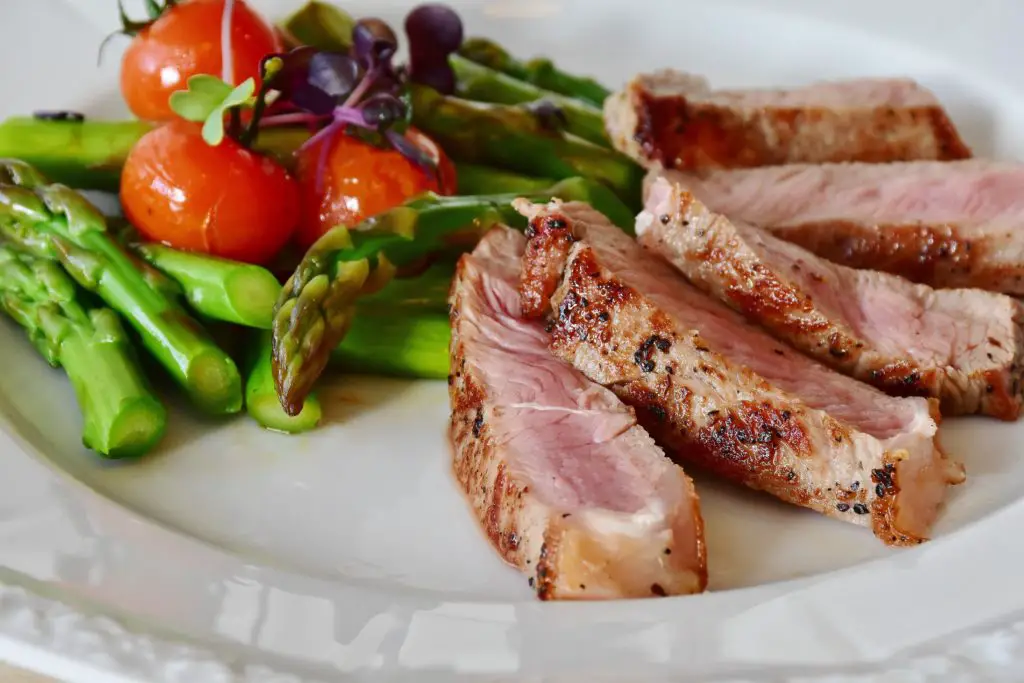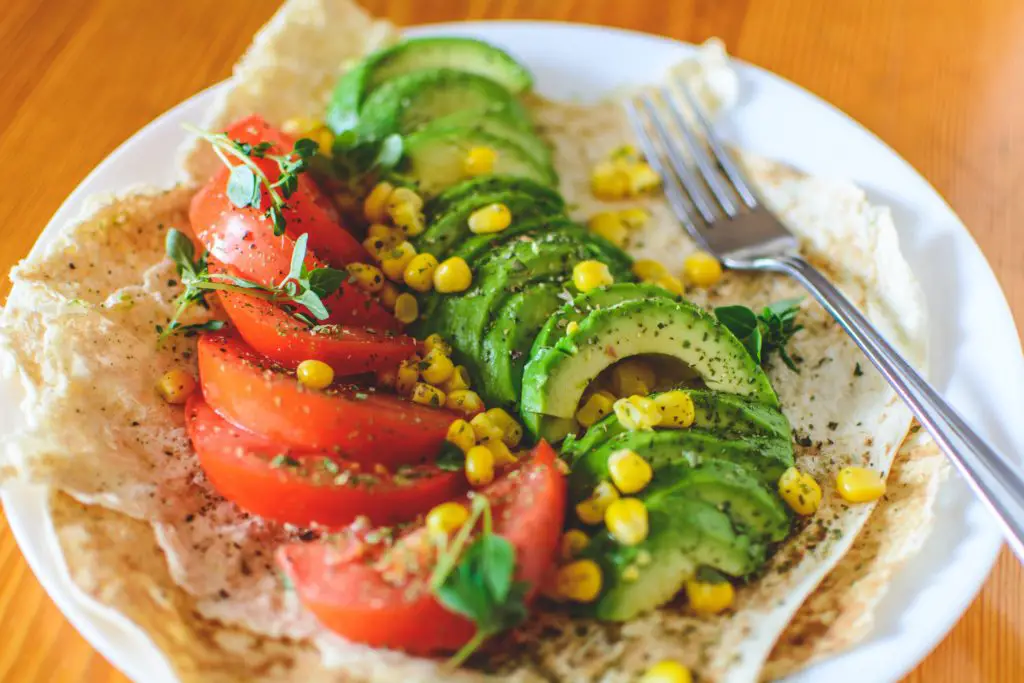What is the Asian Diet?
There actually isn’t a single Asian diet, as there is a tremendous amount of variety in diets across Asia, which is made up of more than 40 countries. However, common traits do exist. Working with the Cornell-China-Oxford Project on Nutrition, Health and Environment, Oldways, a food, and nutrition education nonprofit in Boston, developed a consumer-friendly Asian Heritage Diet pyramid that revolves around the daily consumption of vegetables, fruits, nuts, seeds, legumes, and whole grains (such as brown rice, millet, and buckwheat soba). The diet recommends proteins like soy, fish, and shellfish. Dairy, eggs, poultry, and healthy oils should be eaten less frequently. Red meat and sugary desserts should be eaten infrequently. The pyramid also calls for six glasses of water or tea each day; sake, wine, and beer are OK in moderation. Remember to stay physically active, and you’re set.
Pros
- Diverse foods and flavours
- Filling
Cons
- If you don’t like rice and noodles, forget it
- It’s moderately pricey
Popularity
Asian Diet is Ranked:
- No.5 diet in Best Plant-Based Diets
- No.6 diet in Best Diets for Healthy Eating
- No.8 diet in Best Overall Diets (Tie)
- No.8 diet in Best Heart-Healthy Diets
- No.8 diet in Best Weight-Loss Diets (Tie)
- No.9 diet in Best Diets for Diabetics (Tie)
- No.10 diet in Easiest Diets to Follow (Tie)
How does Asian Diet work?
Since there’s no one Asian diet, you have plenty of latitude in developing your eating regimen. There are certain types of foods, of course, that you’ll want to eat more of. Here are some tips for getting started:
- Ramp up your consumption of fruits and veggies. Vegetables should be at the center of your plate. Eat plenty of whole grains, such as brown rice, black rice, millet, buckwheat noodles, and whole-wheat bread like chapatti, a flatbread often made with whole wheat.
- Consume nuts and legumes.
- Eat proteins like soy, fish, and shellfish – and think of meat as a garnish instead of the centerpiece of the meal.
- Drink six glasses of water or tea every day, and consume sake, wine, or beer in moderation
- Eat mindfully. Savor and appreciate the flavors of your food. And pay attention to when you feel full.
How much does Asian Diet cost?
The cost of the Asian diet depends on what you choose to eat. While some ingredients like fresh fruits and vegetables can be expensive, many options are available that can help control food costs. For example, cooking a plant-based meal at home with in-season or frozen vegetables, whole grains and soy can be easy on the budget.
Will Asian Diet help you lose weight?
This diet will probably help you lose weight. Research suggests people in Asian countries who follow this dietary pattern weigh less than their Western counterparts. That’s likely because it’s high in healthy foods that keep hunger at bay: whole grains, vegetables, and bean products, for example.
- One study, published in Nutrition Reviews in 2012, analyzed the effect of turmeric, a common spice in Asian cuisines. It contains the active ingredient curcumin, which may help prevent obesity.
- Even though the Asian diet is linked with weight loss, followers are often compelled to abandon their ways when they move to the United States, conforming instead to the standard American diet. In one study, researchers at the University of California at Berkeley analyzed whether the desire to fit in might cause U.S. immigrant groups to eat fewer healthy foods. They found that Asian-Americans who were questioned about their ability to speak English were three times more likely to name a prototypically American food as their favorite. When their American identity was challenged, they ordered and ate more typically American dishes, consuming 182 extra calories and 12 additional grams of fat per day than they did when their identities weren’t challenged.
How easy is the Asian Diet to follow?
It is ranked #10 in the Easiest Diets to Follow
Whether the Asian diet is easy to follow depends on your tastes. If you’re not big on brown rice, noodles, fresh veggies, and nuts and legumes, it might be tough. However, from seaweed to lotus root to adzuki beans, it offers the opportunity to eat a tremendous variety of foods.
- The Asian diet isn’t terribly convenient to follow. Some recipes use several spices and oils, which means a lot of preparation is involved. Recipes for the Asian diet can be found online, or if you invest in one of a few Asian diet-specific books. Oldways’ consumer-friendly tips will make meal planning slightly easier.
- You can eat out but traditional Asian diet meals may be tougher to find. Since there are no hard-and-fast rules, you can dine out on the Asian diet, though you may have a tough time at standard American restaurants. Scan the menu beforehand to identify healthy choices. And don’t assume that Indian, Chinese or Thai restaurants are serving traditional fare; entrees are often cooked with fewer healthy ingredients and are higher in calories.
- You still have to prepare meals. This diet offers no timesavers, unless you hire somebody to plan, shop for and prepare your meals.
- Don’t expect any extras. The Asian diet provides no extras.
- Feeling full shouldn’t be a problem. Nutrition experts emphasize the importance of satiety, the satisfied feeling that you’ve had enough. With so many fiber-packed whole grains and veggies (and without a calorie cap), you shouldn’t go hungry.
- You control the taste. With the Asian diet, you’re making everything, so if something doesn’t taste good, you know who to blame.
How much should you exercise on Asian Diet?
The Asian diet is only an eating pattern. But that doesn’t mean you shouldn’t exercise. Being physically active lowers your risk of heart disease and diabetes helps keep weight off and increases your energy level. Most experts suggest getting at least 30 minutes of moderate-intensity exercises – such as brisk walking – most or all days of the week. Other exercises you might consider include traditional Asian exercises such as Tai Chi or yoga.










